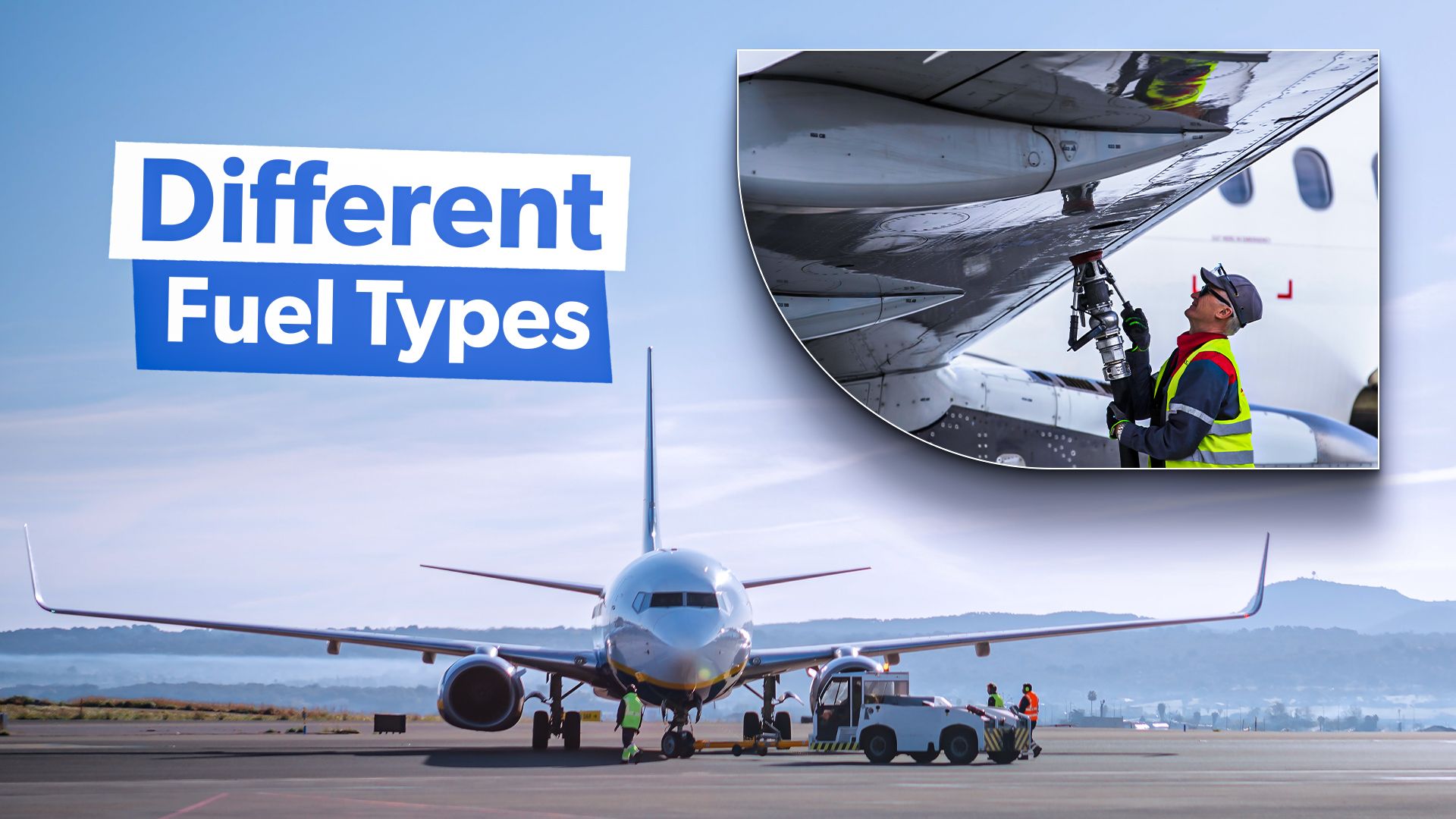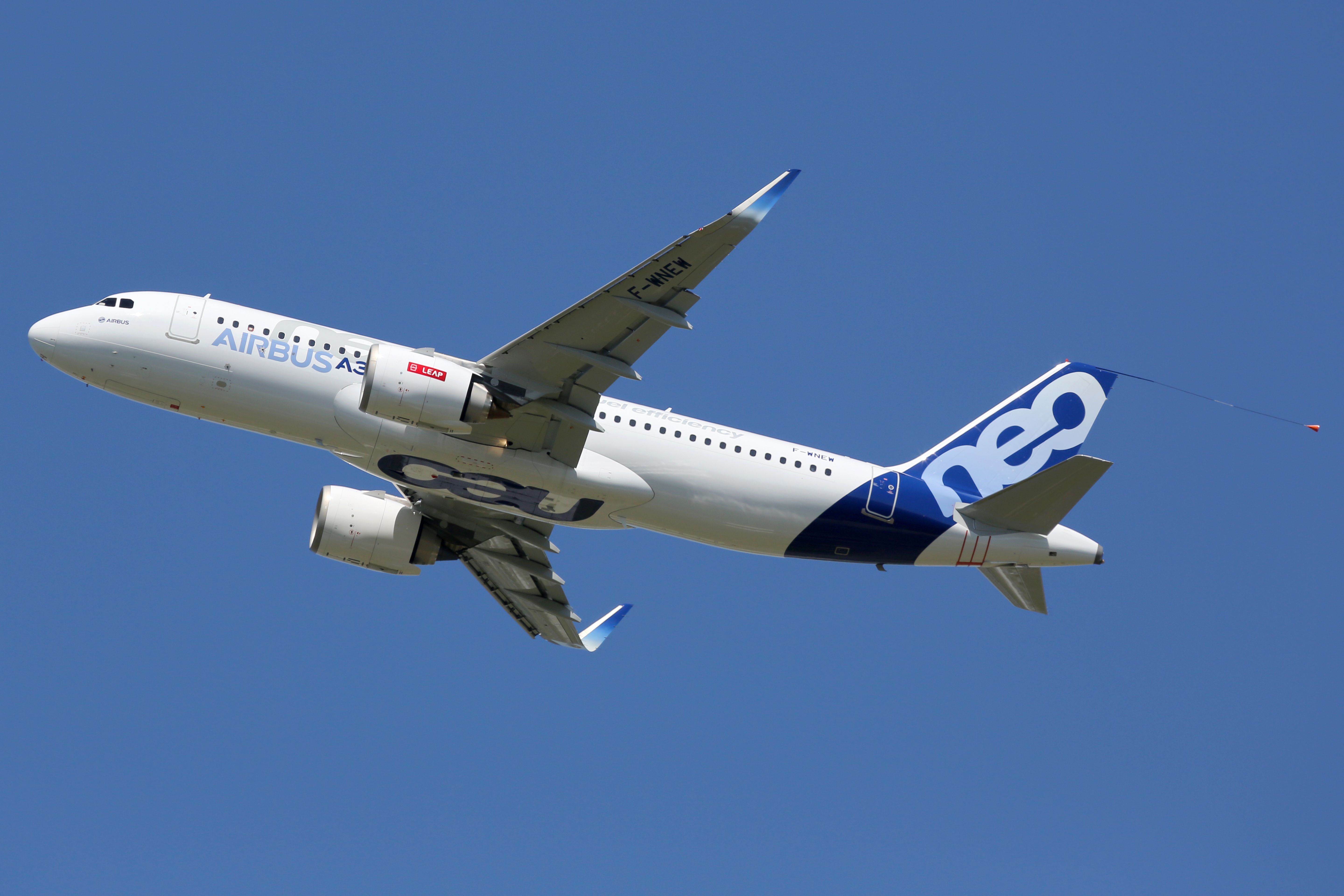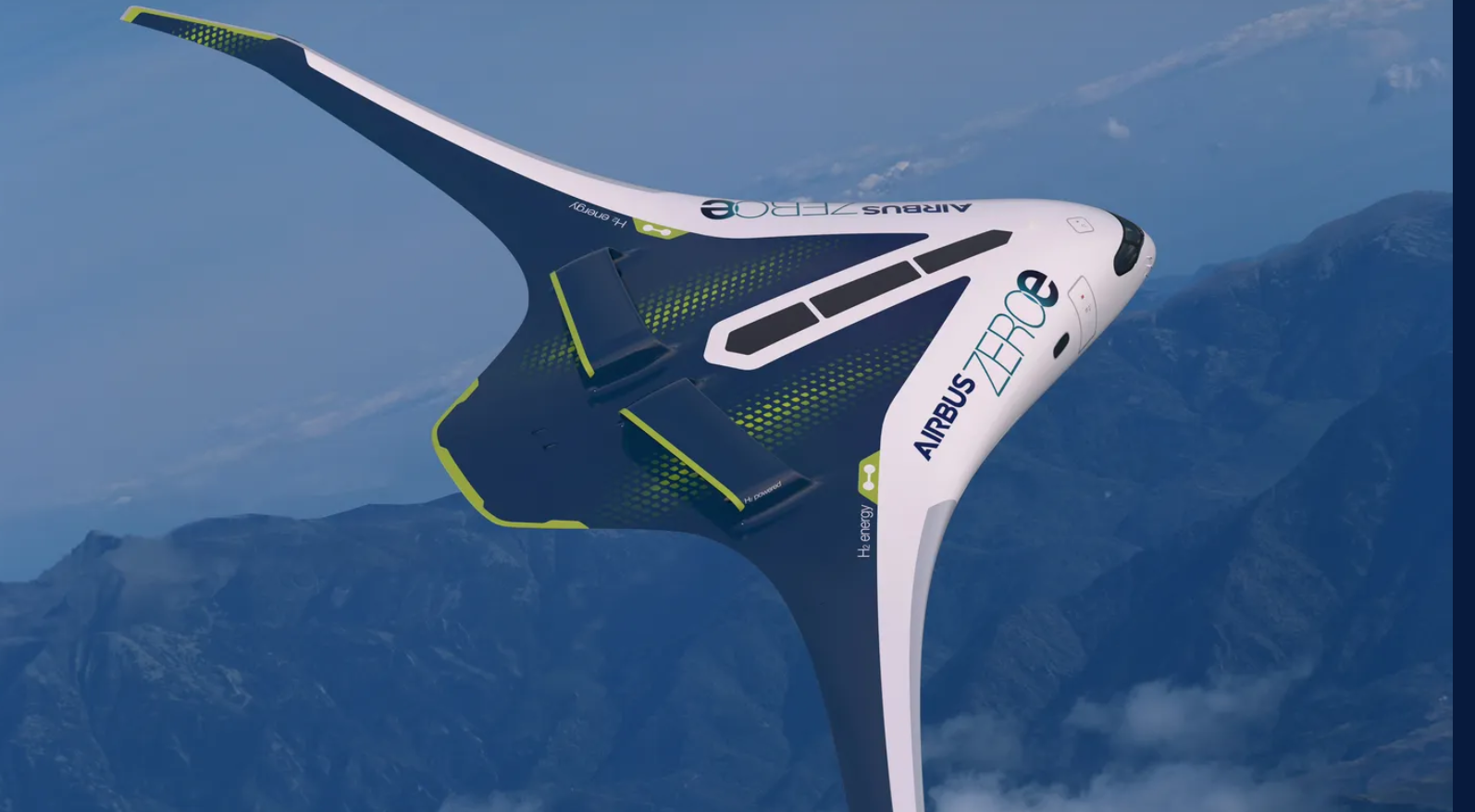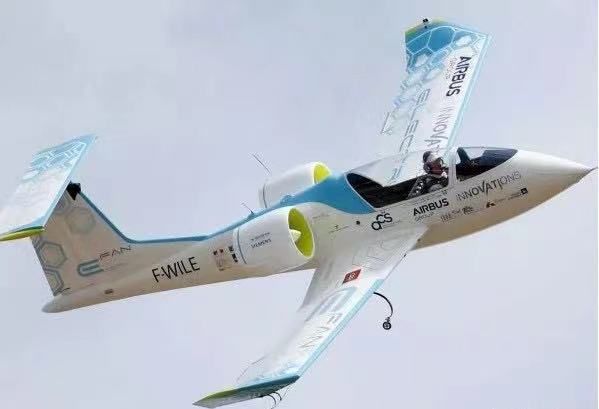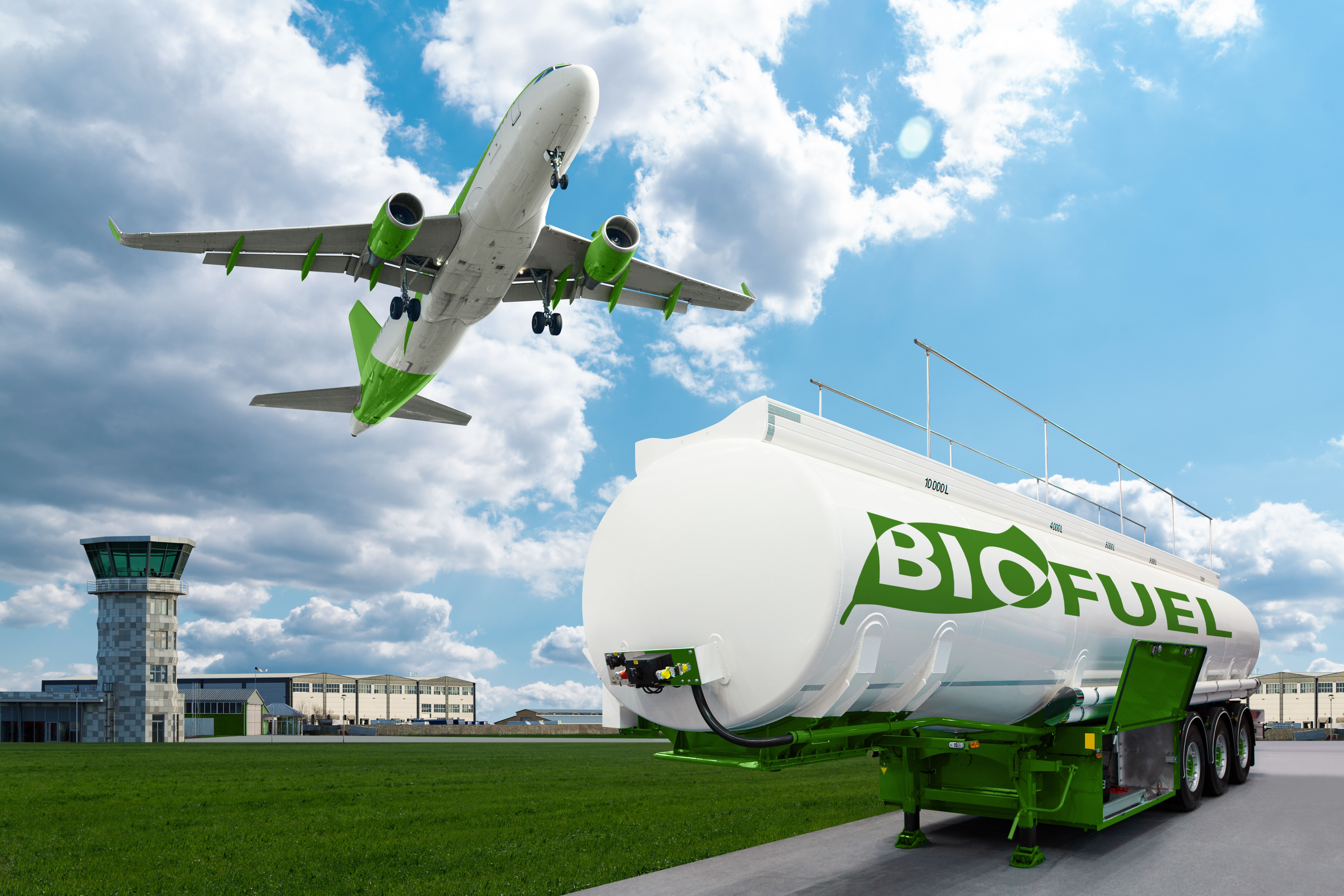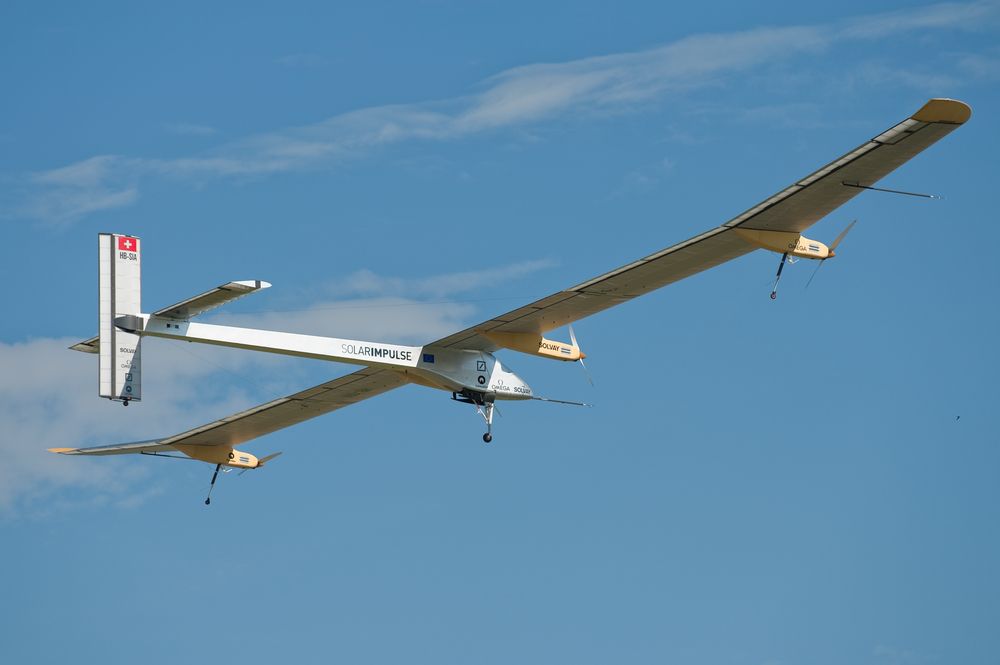Summary
- Jet fuel dominates aviation but drives emissions, while sustainable aviation fuels aim to reduce CO2.
- Hydrogen is the future aviation fuel, but faces developmental challenges, making long-haul use a long-term goal.
- Hybrid-electric propulsion can reduce fuel consumption and increase efficiency.
Today, there is effectively only one transportation fuel – jet fuel. However, this may not always be the case, and it has been proven that aircraft can be adapted to fly on other sources of fuel. Transitioning away from kerosene jet fuel is one of the fundamentals driving the development of future generations of aircraft today. The drive to hydrogen is even driving the development of the H2 Clipper – a giant airship envisioned to be the pipeline of the skies transporting hydrogen.
1
Jet Fuel
Jet fuel or kerosene is the fuel of aviation today but is responsible for most of the industry’s greenhouse gas emissions.
|
Pros: |
energy-dense, comparatively cheap, existing technology and infrastructure |
|---|---|
|
Cons: |
responsible for most of aviation’s greenhouse gases |
|
Note: |
the fuel that runs basically all commercial aircraft |
For now, jet fuel or kerosene is the ‘it’ fuel of the aviation industry. It is used in all turbine-powered aircraft, and according to BP, it accounts for around 6% of total global refinery fuel production. Almost all jet fuels are derived from crude oil in refineries.
Photo: Markus Mainka | Shutterstock
The two main types of jet fuel are Jet A and Jet A1 (although flight operates can use both interchangeably). Jet A1 is the most common in the US and can be used to power all jet aircraft. Another type of aviation gas is AVGAS, which is used to power traditional propeller aircraft and small piston-engine airplanes. AVGAS is the more expensive of the fuels as it requires more refining.
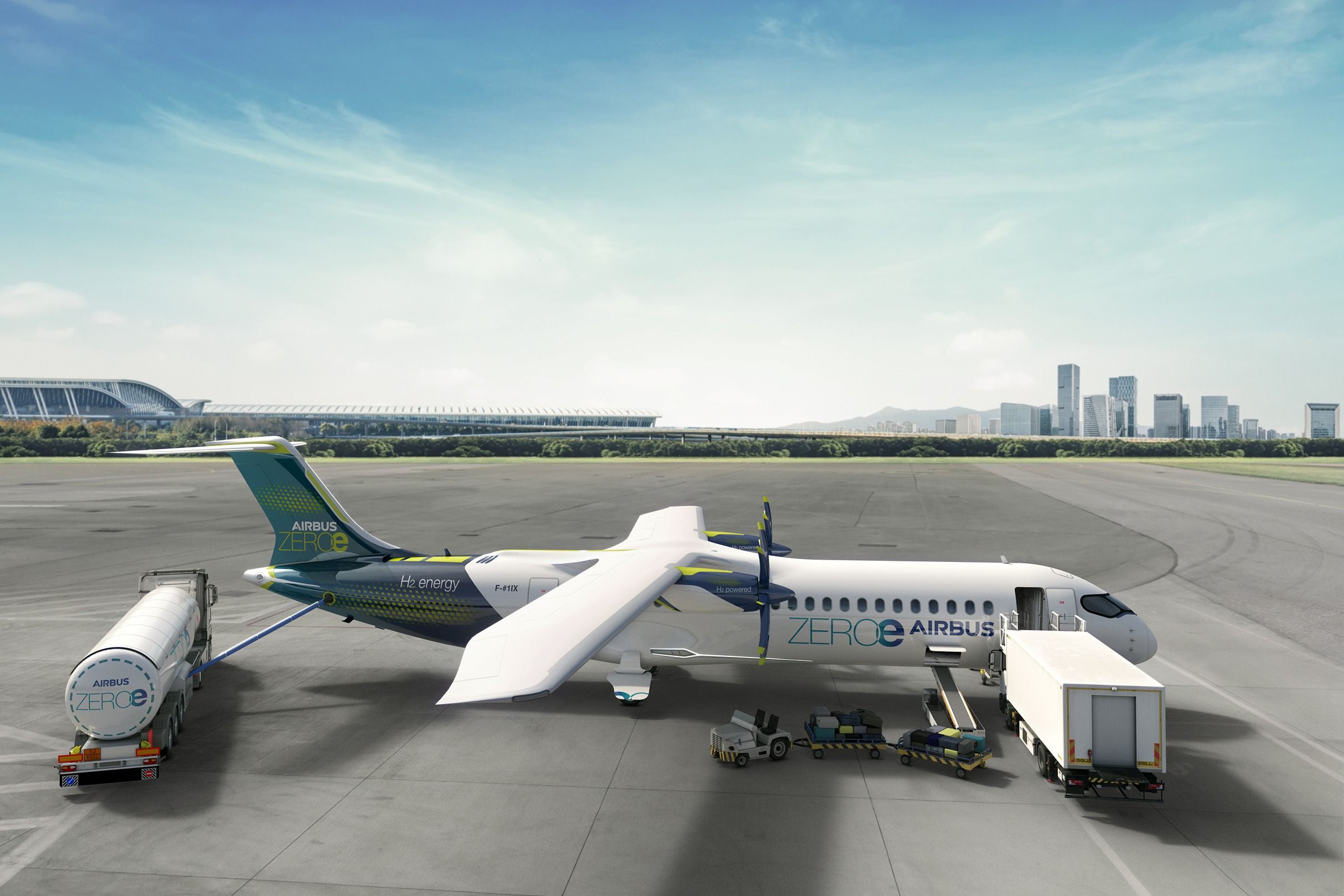
Related
Airbus Leading European Hydrogen Refueling Project
A consortium of European aerospace organizations has come together to design and develop systems and standards for airport hydrogen fuel use.
2
Hydrogen
Hydrogen is seen as the aviation fuel of the future and the best chance to substantively decarbonize.
|
Pros: |
only emits water |
|---|---|
|
Cons: |
expensive, little existing infrastructure, less energy-dense |
|
Note: |
Airbus ZEROe currently under development |
Hydrogen is seen as the fuel of the future and the key to decarbonizing aviation. Airbus is hoping to bring a low-carbon commercial hydrogen-powered aircraft to the market by 2035. Hydrogen faces many taunting developmental issues (including that aviation fuel is four to five times as energy dense).
Photo: Airbus
Airbus states that the visual appearance of future aircraft will likely change to accommodate the need to carry much larger tanks to carry hydrogen. It may be some time before hydrogen airliners can service long-haul routes, and they are likely to be introduced on short-haul routes first.
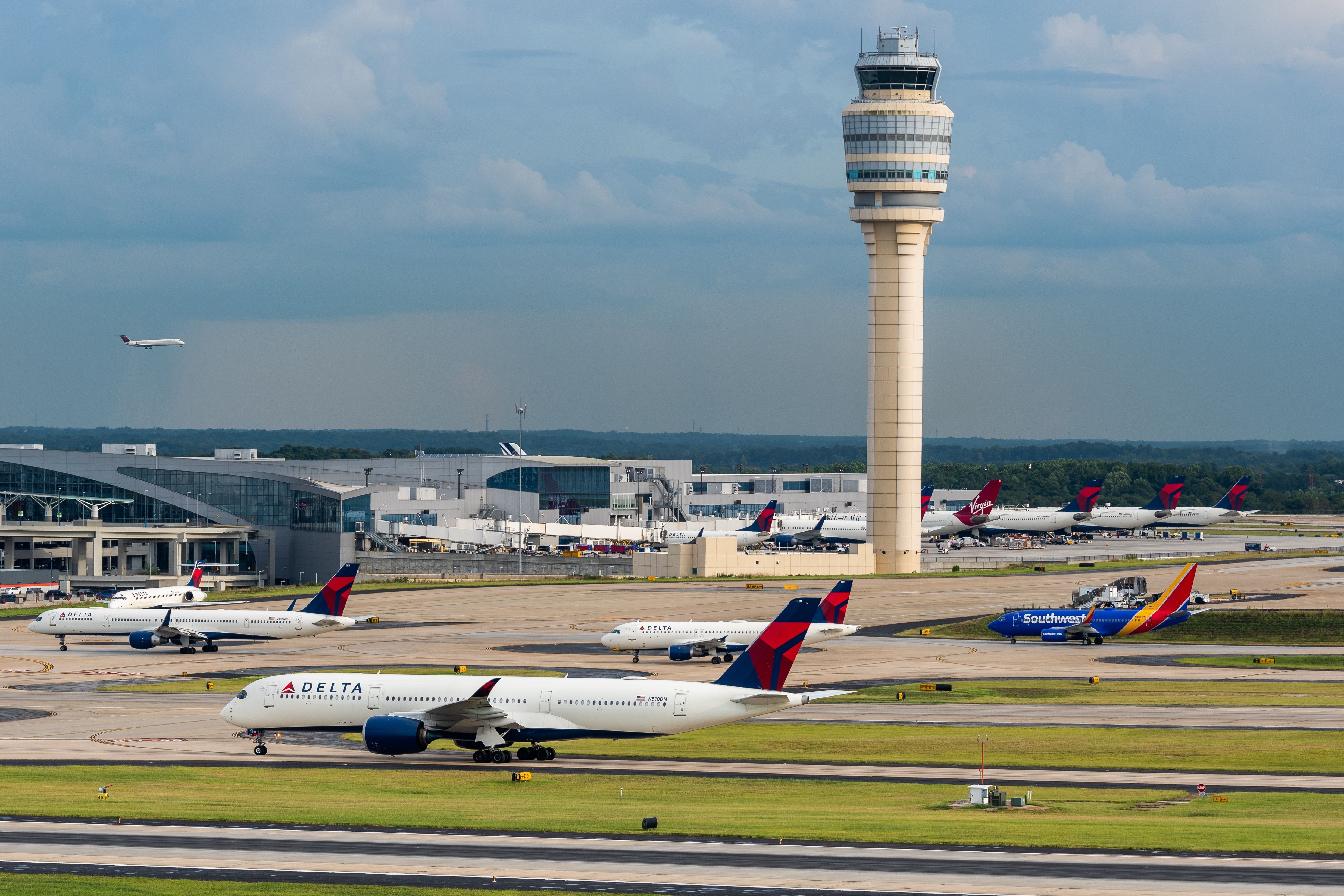
Related
Delta And Airbus Partner On Hydrogen Fuel Study At Hartsfield Jackson International Airport
The study will look at the possibility of having a hydrogen-based hub at ATL.
3
Electric & hybrid-electric
While all-electric flights are likely limited to small aircraft on short flights, hybrid-electric may have a place with larger aircraft.
|
Pros: |
reduce fuel consumption and increase efficiencies |
|---|---|
|
Cons: |
extra weight, only incremental savings |
|
Note: |
Airbus unveiled first hybrid engine in 2022 |
Airbus notes that “electric and hybrid-electric propulsion is rapidly revolutionising mobility technologies across industries” and states that its goal is to bring that to aviation. Airbus wants to help develop electric propulsion for aircraft, helicopters, and urban air vehicles. However, powering aircraft with batteries is exceptionally challenging. Electric power is likely to be used only on short flights on small aircraft.
Photo: Airbus
Like a hybrid electric car, Airbus is also developing a hybrid aircraft that can use several energy sources in tandem or alternately. Hybrid electric propulsion can reduce fuel consumption by up to 5% compared to a standard flight. The electricity can come from batteries or fuel cells that convert hydrogen into electricity.
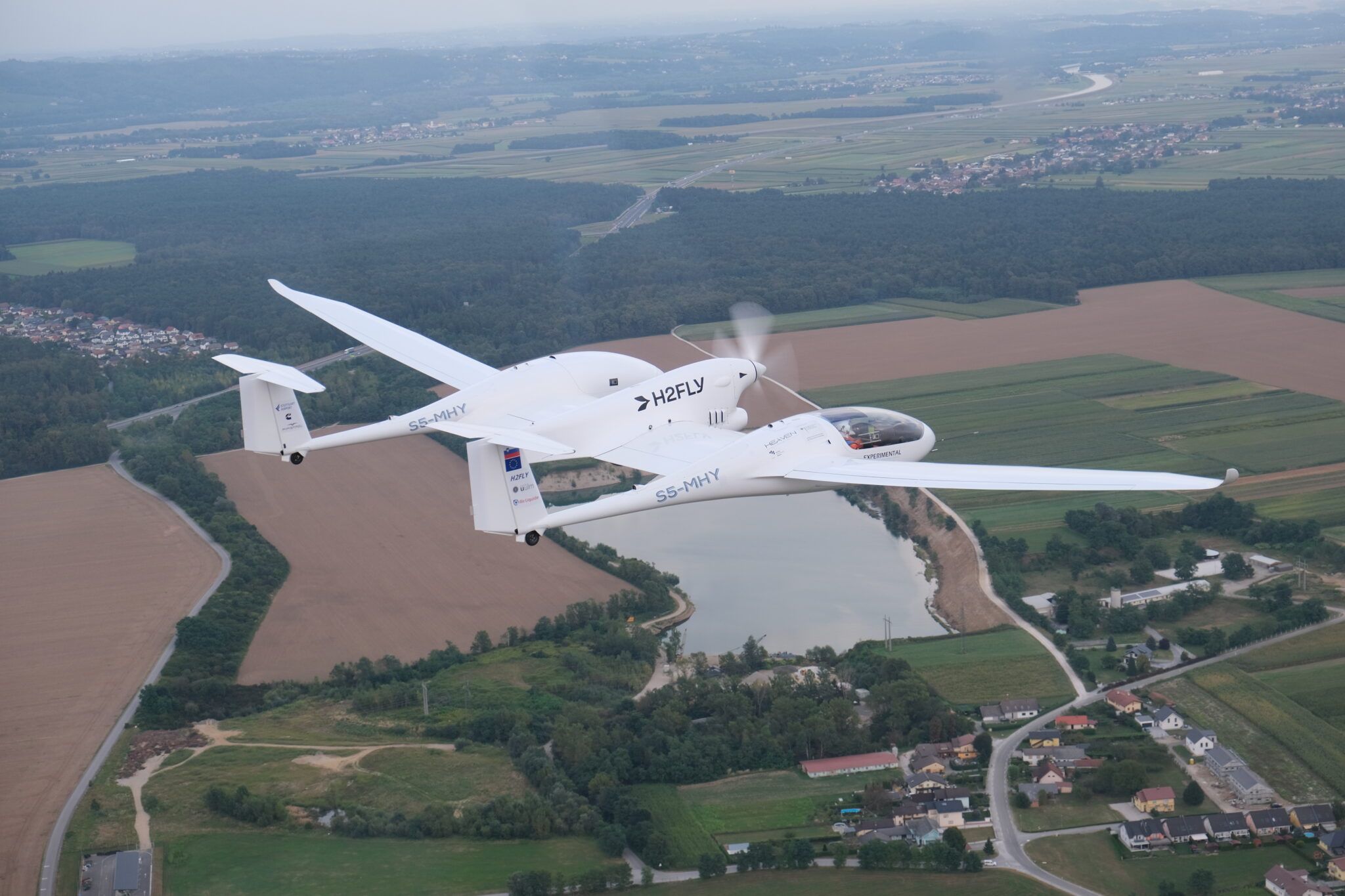
Related
H2FLY’s Hydrogen-Powered Aircraft Has Completed Its First Flight
The company said the aircraft “saw a safe and efficient operation.”
4
Sustainable aviation fuel
SAF fuel can be seen as an interim measure and can be blended with traditional jet fuel.
|
Pros: |
can reduce CO2 emissions by 80% |
|---|---|
|
Cons: |
expensive, possible negative environmental side effects |
|
Note: |
0.2% of all aviation fuel used in 2023 |
Kerosene has been the mainstay of aviation fuel ever since its inception. Sustainable aviation fuel (SAF) is an attempt to help bridge the gap between future hydrogen aircraft and current traditional jet fuel aircraft. It is a type of jet fuel that is a blend of conventional fossil fuels and synthetic components created from a range of renewable “feedstock.” Feedstock” includes cooking oils, fats, plant oils, and various waste.
Photo: Scharfsinn | Shutterstock
Airbus states that all Airbus aircraft can run on a maximum 50% blend of SAF, and it is planned that all Airbus aircraft can fly with up to 100% SAF by 2030. While the world used 600 million liters of SAF in 2023 (double the 300 million liters in 2022), it still represents a minuscule amount of the total aviation fuel use. There are also challenges to sourcing plant oils and other resources to make SAF sustainable and not creating a market that will threaten rainforests by planting palm oil plantations.
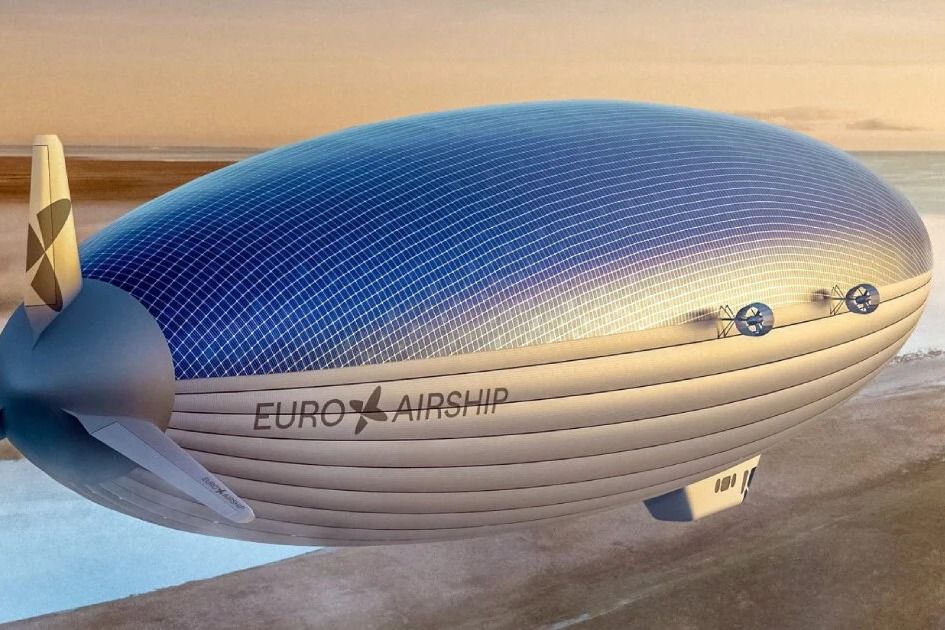
Related
Solar Airship One: Meet The Aircraft That Might Never Need To Stop Flying
Commercial airships could be making a green-focussed return.
5
Solar
While it is possible to fly aircraft with solar power, its greater contribution is to the aviation industry on the ground.
The world receives a vast amount of energy from the sun daily (885 million terawatt-hours annually). A number of companies (including Solar Flight and Airbus) are working to develop aircraft that can fly on solar energy. Airbus is developing solar cell technology to fly unmanned aerial vehicles to stay aloft in the stratosphere for extended periods.
Photo: Frederic Legrand l Shutterstock
Solar aircraft never need refueling. However, it is unclear if this technology can ever be successfully integrated into manned (and passenger) flights – although one novel idea is to make solar-powered airships. While it is possible to fly aircraft (or at least unmanned aircraft) using solar energy, solar energy has a much more important application: generating electricity for airports and other infrastructure. In the future, solar energy may be key to producing green hydrogen for aircraft.
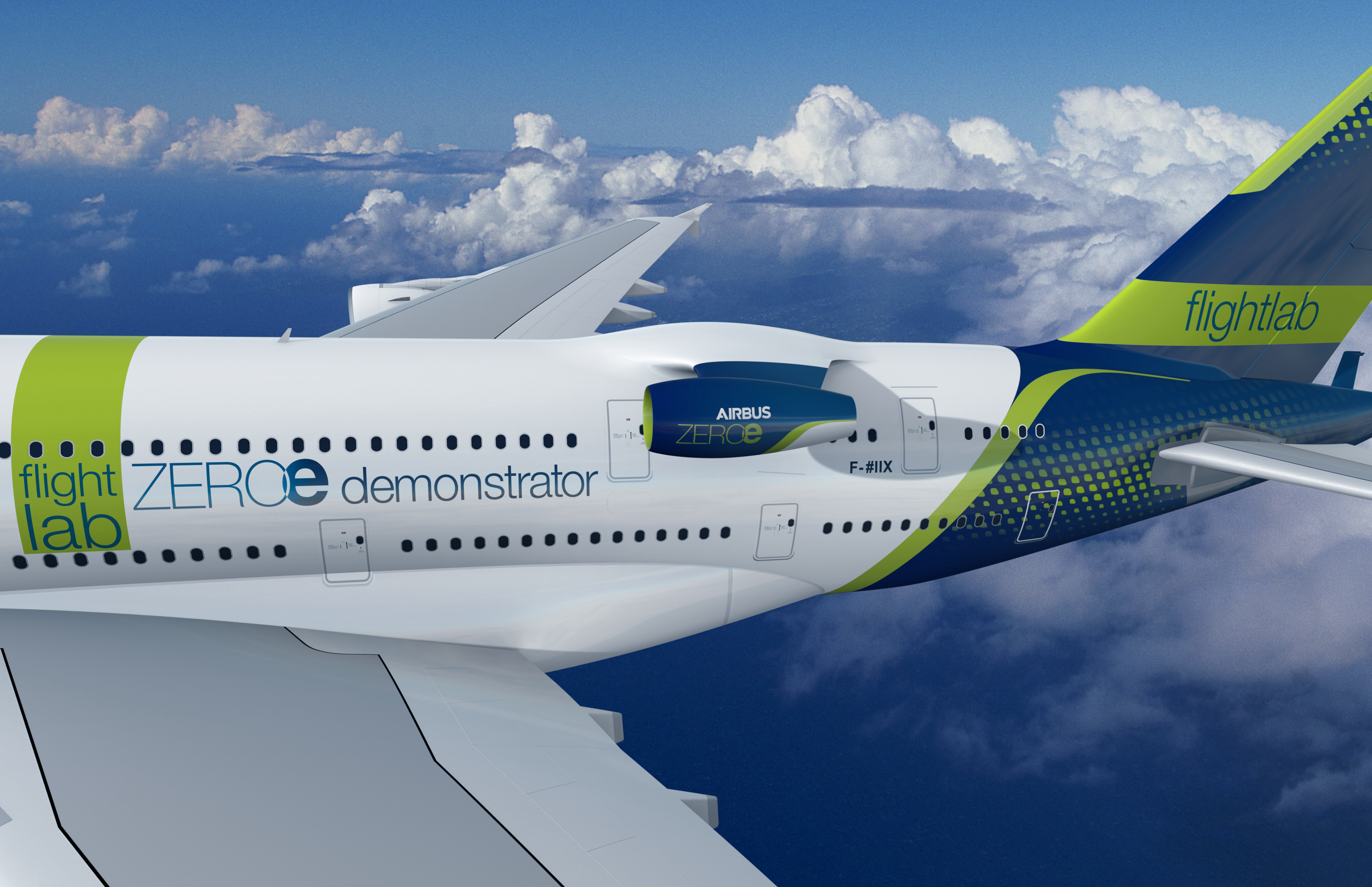
Related
How Does A Hydrogen Jet Engine Work?
Airbus and CFM International partner on the manufacturer’s A380 testbed.

